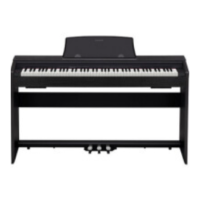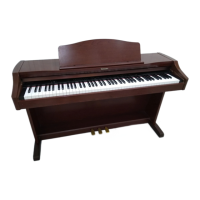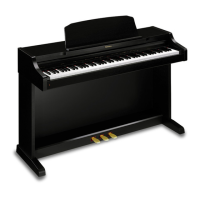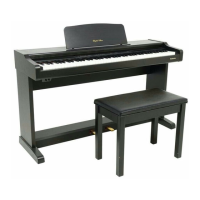
Do you have a question about the Technics SX-PX222/M and is the answer not in the manual?
| Brand | Technics |
|---|---|
| Model | SX-PX222/M |
| Category | Musical Instrument |
| Language | English |
Precautions against electrical shock, fire, and damage from moisture.
Details on Class B digital device compliance with FCC rules for interference.
Covers power source, polarization, and unplugging when not in use.
Placement advice regarding water, ventilation, heat, and foreign objects.
Warning about potential hearing loss from prolonged high volume operation.
Guidelines for when to seek qualified service and basic maintenance.
Steps for plugging in, powering on, and setting the main volume.
Instructions for operating the keyboard cover and attaching the music stand.
How to select and listen to demonstration performances of other instrument sounds.
Procedure for playing all demonstration tunes in sequential order.
How to select sounds, use Touch Response, and mix two sounds.
Explanation of Digital Reverb types and the Digital Effect (celeste).
Adjusting keyboard touch response and understanding pedal functions.
Introduction to the sequencer for recording and playback.
Detailed steps for mixing two sounds and adjusting their volume balance.
How to change the key of the instrument using the Transpose buttons.
Procedure for adjusting the instrument's pitch, useful for ensemble playing.
Adjusting the depth of the Digital Reverb effect for different types.
Adjusting the amount of sympathetic string resonance for specific sounds.
Turning on the metronome, adjusting tempo, and setting volume.
Adjusting metronome volume and selecting time signatures with accents.
Understanding the sequencer's multi-track recording and playback capabilities.
Step-by-step guide for recording the first track in the sequencer.
Step-by-step guide for recording the second track, playing along with Track 1.
Information on sequencer storage capacity, errors, and recording modes.
How to play back recorded tracks and erase individual tracks.
Details on Piano Tuning, Minimum Range, and Sostenuto functions.
Method for turning functions on or off using panel buttons.
Procedure to reset all settings to their default values, clearing sequencer data.
Explanation of MIDI IN/OUT terminals and transmittable data types.
Illustrations of connecting the piano to computers via MIDI.
Steps to set the MIDI channel number for data transmission.
How to transmit Program Change numbers using BANK and NUMBER keys.
Reference chart correlating keyboard notes with MIDI note numbers.
Connecting pedals, external sound modules, and amplifiers.
Connecting to Macintosh and PC computers via the COMPUTER terminal.
Using headphones for silent practice, which mutes the speakers.
Lists common operational problems and their solutions.
Explanation of how the instrument's memory is backed up and retained.
Detailed instructions for assembling the piano and stand.
Checks to perform after assembly to ensure proper setup.











